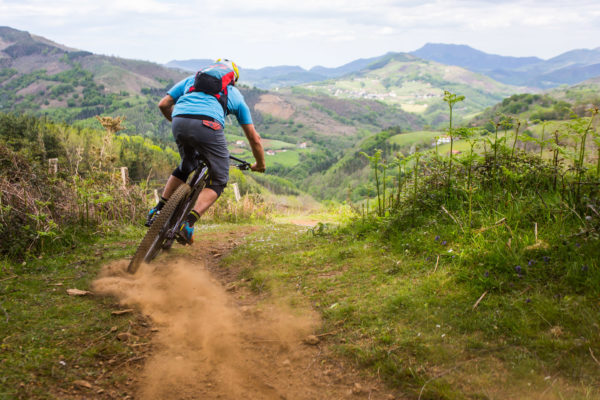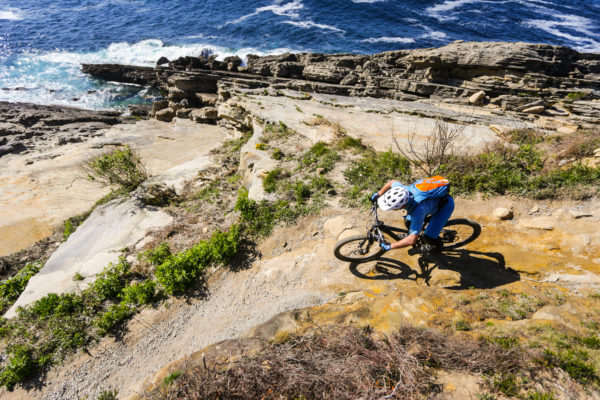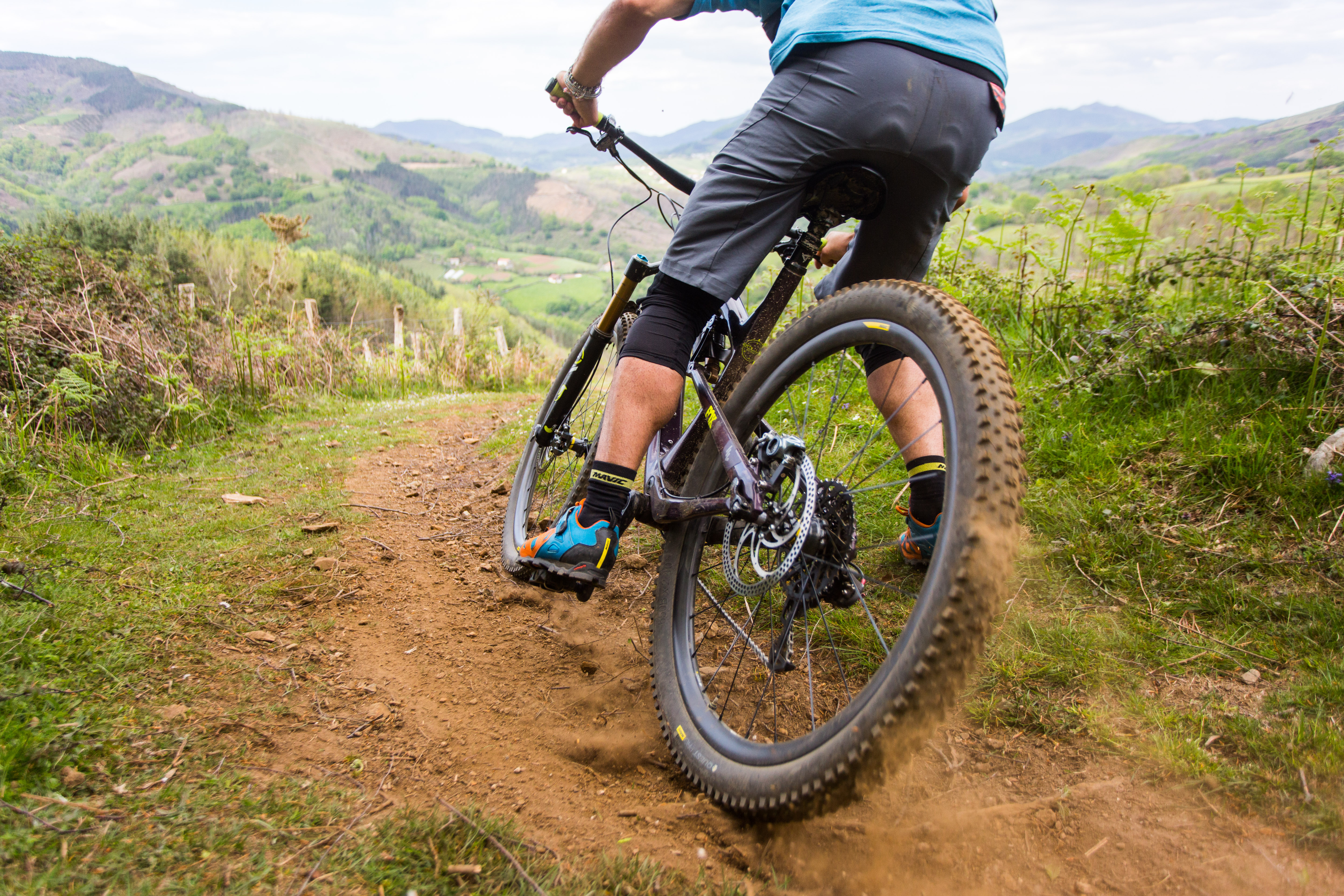
For a company that has long relied on aluminum for their mountain bike wheels, Mavic’s new XA Carbon wheels were pretty big news. As part of their Wheel Tire System, the XAs are a UST tubeless, hookless carbon wheelset that supposedly allowed Mavic to justify the move to carbon fiber. We first got a chance to test them out during the press launch in the Basque Country – which is fortunate considering I run guided tours here with my company basqueMTB. While I was the guide for the press launch, I also had a chance to ride the wheels so I had more time on the them than most, and also had an advantage since I know the trails and have ridden them on many different wheels and bikes over the years. I tested the wheels on my Orbea Rallon, which I have previously ridden with the Mavic Crossmax XL wheels and also with DT Swiss E-1700 wheels.
I have to state up front that I’ve tried several other wheels and am not a massive fan of carbon wheels currently. Sure, I love the weight and snappy acceleration they provide, and I love the way they hold a line and lend a bike a degree of precision. What I don’t like about carbon wheels in general is the harsh feel they have when pressing on in rough terrain. Someone once told me that the best way to improve a bike’s small bump compliance is to take 5psi out of your tyres, well, I often think that carbon wheels add 10psi back on!
I listened to Mavic´s press launch carefully and was impressed that they had really focused on increasing lateral stiffness but the engineers obviously understood that decreasing vertical stiffness was the way forward. You can find all of the technical information in our tech break down on the Mavic XA wheels, however the figures suggest I should have a wheel which is as stiff or stiffer than most leading carbon wheels but more vertically compliant than my Crossmax XLs . Would I be able to feel it? Would these wheels be any different from the other carbon wheels I’ve tested? Read on to find out…

First Impressions / Pre Ride
The Mavic XA wheels look great, with very understated graphics marked out in a matte and shiny effect on the carbon rim. They spin nicely, with a fairly loud freewheel noise which I like. We had to set a couple of tyres up tubeless and they went on easily and inflated first time. This is something I have come to expect from Mavic tyres and wheels however it was good to see the hookless rims working just as well.

Comfort / Riding Impressions
When riding you definitely feel the vertical compliance of the wheels, in fact you can actually hear the spoke tension change on big impacts. The wheels noticeably don´t have that harshness that other carbon rims can have, however they still feel plenty stiff and strong when leaning into corners. We rode some trails where there are very unforgiving root and rock gardens, which try to rob momentum and grip from the tyres, however the XAs rolled well through these and felt as comfortable as any rim I have tested regardless of the material. They still have the great lateral stiffness though which I love about carbon rims, letting you hold a line and be precise even at high speeds. The light XA rims pick up speed noticeably more quickly than the aluminium rims I was running on my bike the day before and pumping through the roots generates momentum quickly. In spite of some very rough terrain and a bit of over enthusiasm as I lead the groups down my trails I didn’t find any limitations on the rims. There were a few rim to rock impacts, on various bikes including mine through the week, and despite a couple of punctures the rims were pretty much unmarked at the end of the trip.

A Word On Punctures
We rode a long and very rocky trail on the press launch, I know the trail well and I guide it often and find that we get a lot of punctures in certain sections. This made it quite noticeable how few we had on the press launch. I spoke to the Mavic engineer about this and he said it could be due to the wider rim profile coupled with the hookless design, which gives the tyre sidewall a more natural profile. This possibly helps prevent the pinch punctures you get in tubeless wheels which usually puts a hole near the bead and the other on the tread. It is quite a small sample size, with around 30 people over the course of 4 days, however based on that group size, the speed we rode and the fact that we were all on single ply tyres I would have expected several punctures – at the end of the week we only had two or three.

In summary, the wheels feel like carbon wheels in terms of lateral stiffness and snappy acceleration however I definitely felt that they lacked the harshness of other carbon wheels I had tested. Tyres set up tubeless very easily and we experienced fewer punctures than I would have expected. Longevity and long term impressions will have to wait until we can test the wheels for longer periods, however I think that Mavic has entered the mountain bike carbon wheel market with a great product and we will be seeing these wheels on plenty of bikes soon.
A Word on the Mavic Quest Tyres
The wheels came with the new 2.4” Quest tyres. I run the Mavic Charge tyres on the front of my bike and was worried about putting the Quest on front and back as it lacks the deep, aggressive tread of the Charge tyres. I needn’t have worried, the Quest tyres were faultless through my test period. We rode a few trail conditions, from deep leaves to jaggy rocks, and from dry and dusty to wet and muddy. The tyre performed well on the rear, giving plenty of grip for braking and for the tough climbs we experienced. On the front the tyre was more than match for the trails we rode and had plenty of cornering grip to give me the confidence to ride fast. I think if the trails got very, very dusty or more muddy I would have wanted my Charge back but for most trails I would be very happy sticking with the Quest front and back and enjoying the lighter weight and good rolling on the climbs. I´ve just ordered a couple of sets of the 2.4” Quest tyres for my bike based on the week I spent on them with Mavic so you could say I´m putting my money where my mouth is on that one.
